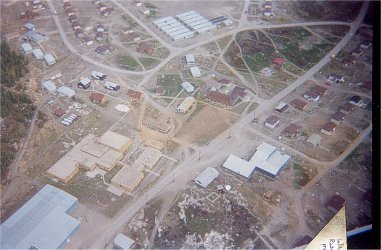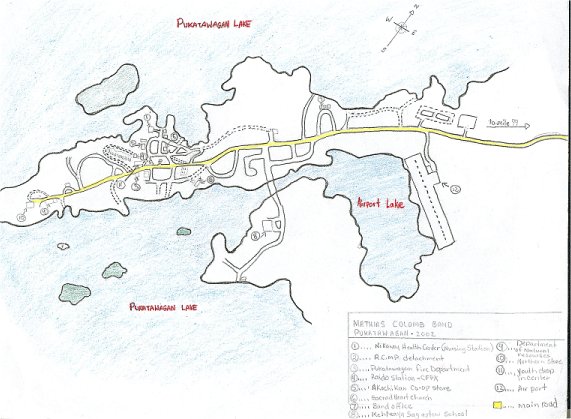A
SHORT HISTORY OF PUKATAWAGAN
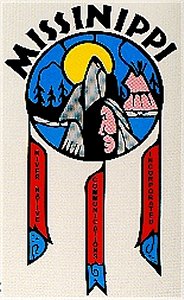
Pukatawagan is a Cree word meaning "fishing plac" or "fishing with
a net." The Pukatawagan community is stretched out along the Missinippi
("Big Water") River or Churchill River system which has tributaries originating
in the Rockies and which flows all the way to Hudson Bay. The culture of
the Missinippi-Ethiniwak or "big river people" has always been based upon
this river. They were active, and often vicious, defenders of the Churchill
River. River trips were an important part of their way-of-life for centuries
and they protected these waters from the coming of other tribes.
The Missinippi people had well-organized governments that had sets
of unwritten fundamental principles which were adopted to run their villages.
Elected leaders appointed an Elders Council for advice. The Elders were
the heart of the community and were respected by the people. The Elders
and the leaders in turn appointed various people to oversee law and order
in areas of crime prevention, childcare, marriage counseling, supervision
of the young, education, hunting and fishing laws, wildlife conservation,
story telling, tribal wars, scouting and the everyday functions of the
community.
The Elders taught the young about love and respect for all life forms
on earth and belief in the creator of all living things: Kise-Manito. Legends
were told to young children as a way of inculcating respect for wildlife
conservation and harmony with nature.
The tribal leaders appointed judges to implement law and order. All
trials were held in public and the accused were publicly reprimanded. There
was no capital punishment but serious offenders were banished from the
community for life. Everyone in the community had a say in daily affairs.
Local gossip was used as a deterrent and a village crier would make the
rounds, loudly announcing everyday news and events.
The Missinippi people believed that the river was put there by Kisimanito
for the people to use. The river was symbolic of pride and stability because
it was abundant in both wild life and migratory birds. The Missinipi people
would give up their lives rather than lose their mighty river. Their basic
religion was to hold onto their river forever.
The Missinippi ideology was flexible and evolved to meet changes
in the Missinippi way of life. Morality was not given high priority because
morality can become quite flexible when it comes down to a matter of survival.
If outside families were caught inside their river area it was the custom
to kill the whole family. If they were to kill only the mother and father,
there was a good chance that the children would later come back for revenge.
They lived by the code of the survival of the fittest -- the strongest
survived. The Chipweyen from the North and the Swampy Cree from the South
considered the Missinippi tribe to be heartless killers and had managed
to stay away from the big river. In return, the Missinippi people had never
attempted to move into the Kisiskatchewan (Saskatchewan) River area.
Offerings regularly were placed in the river at sunrise to appease
Kisimanito: tobacco, berries, choice portions of food, the first kills
of new hunters, and even sick or handicapped babies. Dead wise men were
placed sitting down by large river bank trees so that they could watch
the mighty river. During severe winters, or times of hardship and famine,
some communities ended up killing each other for food. It was the custom
for older people to become food, if it were a matter of survival. At times,
a woman might kill her husband to feed the young ones. Sometimes the woman
would become insane for the crime she felt she had committed and end up
killing her young ones in order to remain alive. Legend has it that such
women became ravaging supernatural-like Whitigos who preyed on and
terrorized other families.
The Missinippi religion, unlike that of many Southern tribes, allowed
women to join in tribal ceremonies during their menstruation periods. One
of many examples of the high esteem in which they held their women. While
men did most of the hunting and trapping, women served as food gatherers,
midwives, collectors of herbs and roots to heal the sick, child bearers,
educators, and caregivers to the young, the infirmed and the dying. They
often served as spiritual leaders as well, and even prepared the bodies
of the deceased for the wake ceremonies.
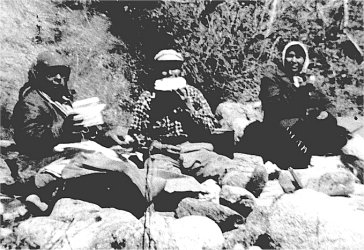
In the old days members of the tribe were migratory and followed
the movement of fish and animals. In the spring they set up camp closest
to the river mouths where fish lay eggs. They would also gather at
rapids where fish were channeled into natural fish traps where they could
be netted or scooped up. Women would dry the fish and pound them into flakes
known as Kinosiwithiwahikanak which were often eaten with wild berries
and grease. Wild game included waterfowl such as ducks, geese, and swans,
large game such as moose, and fish such as sturgeon and pickerel. Beaver,
muskrat, rabbit, lynx, wolves and bear were trapped for clothing, blankets
and food. One method of trapping involved the cutting of two large logs
and arranging them in such a way that they would crush the animals as they
moved the bait. In the summer they blockaded all the underwater running-way
routes of the beavers and then cut open the beaver house. They would then
kill the whole household.
Many of the old ways died, however, when the white man arrived on
the river. The people were gathered on reserves, much their land was taken
from them, their tribal laws, customs and religion were replaced, and they
were pressured into signing land treaties.
The Hudson Bay Company arrived in the area as early as 1794. The
first fur trading posts on the river system were established at Granville
Lake, Pelican Narrows, and High Rock Lake. The early traders and explorers
included HBC's George Charles and William Linklater as well as the Northwest
Company's David Thompson and Francois Morin.
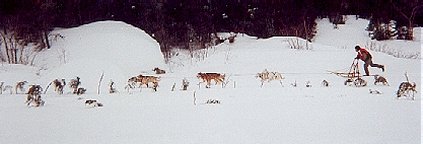 Before the late 1800s most of the Cree people along the Missinippi River
did not have last names. Shortly after birth a child was given a name by
an older member of the family. When last names came into fashion they were
derived in various ways: some were actual Cree names, some were English
translations of Cree names, others were from Scottish or French trappers
who married Cree women, and some were chosen just because they were family
names that people liked. Since the Catholic priests in the area were mostly
French, many people were baptized with French first names. Common Pukatawagan
names include: Bighetty, Bear, Caribou, Bird, Cook, Castel, Cursiteur,
Colomb, Daniels, Daylight, Dorion, Dumas, Francois, Hart, Hunter, Kinokapo,
and Linklater.
Before the late 1800s most of the Cree people along the Missinippi River
did not have last names. Shortly after birth a child was given a name by
an older member of the family. When last names came into fashion they were
derived in various ways: some were actual Cree names, some were English
translations of Cree names, others were from Scottish or French trappers
who married Cree women, and some were chosen just because they were family
names that people liked. Since the Catholic priests in the area were mostly
French, many people were baptized with French first names. Common Pukatawagan
names include: Bighetty, Bear, Caribou, Bird, Cook, Castel, Cursiteur,
Colomb, Daniels, Daylight, Dorion, Dumas, Francois, Hart, Hunter, Kinokapo,
and Linklater.
The Pukatawagan people originally were part of the James Roberts
Band of Montreal Lake, Saskatchewan. Later, the band members formed the
Peter Ballantyne Band at Pelican Narrows of Lac La Ronge, Saskatchewan.
In 1876 and 1889, Woods, Crees, Stonies, and other Indians inhabiting the
121,000 square miles from Saskatchewan to the Rockies in the West, signed
Treaty #6. The Pukatawagan people were included in this treaty.
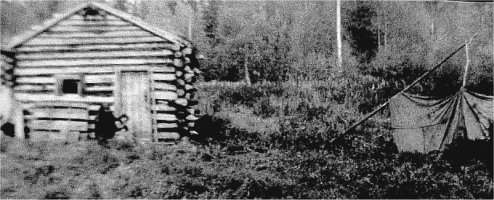
Until the new reserves were set up, Cree all along the Missinippi
had to travel to Opawikoschikanihk (Pelican Narrows, SK) which means "fearing
the narrows." At one time hostile tribes would wait for canoes at the narrows
and would attack them with arrows. The area now known as Pukatawagan
was not much more than a gathering site or meeting place at that time.
In order to collect their treaty money, many of the Missinippi-Ethiniwak
who lived all along the Churchill River from the prairies to Hudson Bay
had to make the long river trek to Pelican Narrows where Soneyawikimow
(Indian Agent) would dole out their allotted five dollars. Finally, in
1910, the Mathias Colomb Indian Band was established at Prayer Indian Reserve
and later in the 1920s they claimed reserve land at the present Pukatawagan
site and at other points up and down steam along the Churchill River. Their
land claims in many of these areas, however, are still in dispute.
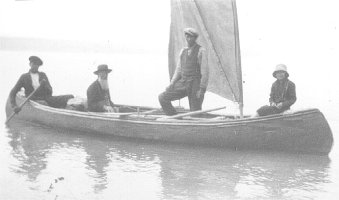
Following the recognition of the reserve at Pukatawagan, the band
commenced building log houses on the site and Hudson Bay and other fur
traders moved in to do business. Native trappers sold furs for money to
buy canoes, guns, tents, food, twine, gunshot, clothing, knives, lard,
tea, and other necessities. Later on, during World War II, when the Hudson
Bay Company left the area, even priests became involved in the fur trade.
Father Emile Desormeaux travelled all over the north by dog team and canoe,
acting as a fur buyer while he preached the word of the Lord - often in
Cree. He was a man of many other trades as well: judge, dentist, doctor,
policeman, school principal - and he, as have a long line of priests, assisted
Chiefs and Councils in working toward community progress.
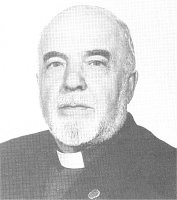
FATHER EMILE DESORMEAUX
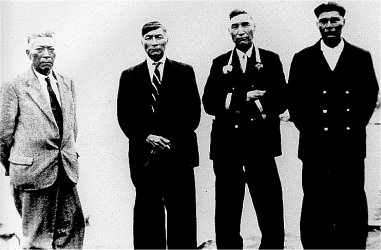
PUKATAWAGAN LEADERS OF THE 1930s
Standing from left to right are: Councillor Joe Castel,
Councillor Thomas Colomb, Chief Soloman Colomb and
Constable Alphonse Dumas.

![]()
